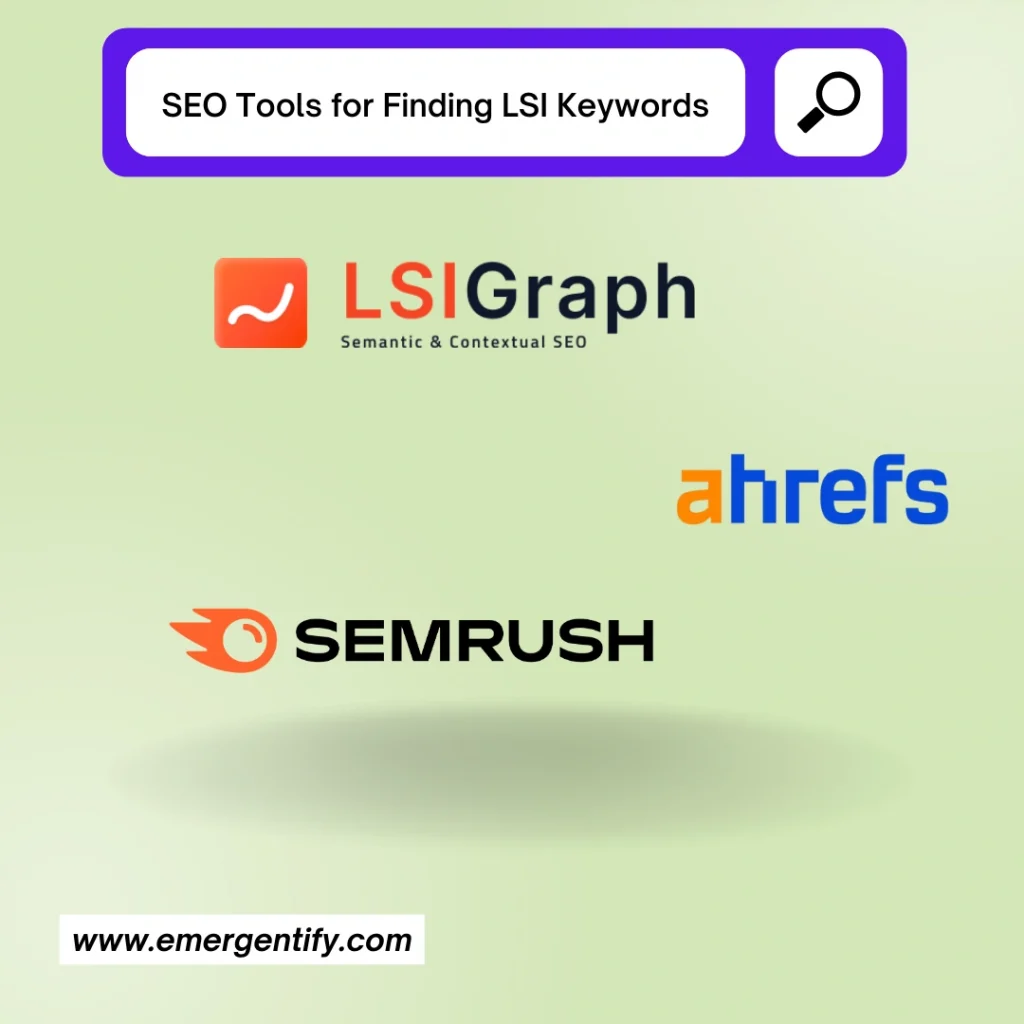- September 22, 2024
- by admin
- On-Page SEO
- 4 Comments
Latent Semantic Indexing (LSI) is a method used by search engines to understand the context and relationships between words on a webpage. Unlike traditional keyword usage, where the focus is solely on one specific term, LSI keywords involve words and phrases that are contextually related to the primary keyword. This helps search engines like Google identify the broader theme of a page, ensuring that it aligns with what users are searching for.
In modern SEO strategies, LSI keywords have become increasingly important. Rather than focusing on keyword repetition, LSI keywords allow content to remain natural while providing search engines with the necessary context to rank the page accurately. By incorporating LSI keywords, content creators can improve on-page SEO and ensure that their content is relevant, engaging, and better aligned with user intent.
For instance, when optimizing a page for the keyword “Apple,” related LSI keywords like “iPhone,” “MacBook,” and “Apple Store” help clarify that the page is referring to the tech company rather than the fruit. This ensures that the content is more relevant to the user’s search query and avoids the pitfalls of keyword stuffing.
During our own experience with SEO projects, we found that focusing on LSI keywords not only helped our clients achieve higher rankings but also improved their user engagement metrics. This approach has become a cornerstone of modern on-page SEO services, allowing us to deliver optimized content that aligns with both search engine algorithms and user expectations.
Understanding LSI: More Than Just Synonyms

By understanding the difference between synonyms and LSI keywords, you can craft content that is not only more aligned with user intent but also more relevant to search engines. This approach allows you to avoid keyword stuffing while making your content naturally richer and more engaging. Integrating contextually related terms into your SEO strategy ultimately leads to improved rankings and organic traffic growth.
What are LSI Keywords?
LSI (Latent Semantic Indexing) keywords are terms and phrases that are contextually related to your primary keyword. They help search engines better understand the overall theme and content of a webpage. Unlike traditional keywords, which focus on exact matches, LSI keywords give search engines more context, helping to clarify the meaning behind the content. This can improve how well your page aligns with user search queries.
Common Misconceptions about LSI Keywords
Many people assume that LSI keywords are just synonyms, but that’s a common misconception. While synonyms may be part of the mix, LSI keywords go beyond that. They include words and phrases that are closely related to the topic and provide additional context. For example, if your primary keyword is “Apple,” LSI keywords could include “iPhone,” “MacBook,” and “Apple Store.” These aren’t synonyms of “Apple,” but they are contextually related terms that help clarify that the content is about the tech company, not the fruit.
Difference Between Synonyms and Contextually Related Terms
Synonyms are words that have the same or similar meanings, such as “car” and “automobile.” However, LSI keywords are not just about finding words with similar meanings. Instead, they focus on identifying contextually related terms that add depth and meaning to your content. For example, in the context of on-page SEO services, a primary keyword like “SEO” might have LSI keywords such as “search engine optimization,” “meta tags,” and “organic traffic.” These terms are related to the main topic but aren’t simple synonyms—they provide additional information that helps search engines understand the page’s overall theme.
Understanding LSI: More Than Just Synonyms

By using LSI keywords, search engines can connect the dots between related terms, improving the overall relevance of your content. This leads to better search visibility as search engines can more accurately match your page to diverse user queries. In our experience, leveraging LSI keywords has resulted in improved ranking positions for our clients, as it helps content better align with user intent.
The Importance of Context in SEO
Context is crucial in SEO because search engines don’t just look for exact keyword matches anymore. Instead, they use advanced algorithms to understand the overall theme of a webpage. This is where LSI keywords come into play—they help search engines grasp the context surrounding your main keyword, ensuring that your content is relevant to a user’s query.
How Search Engines Like Google Use LSI to Understand a Webpage's Theme
Search engines like Google use Latent Semantic Indexing to map out the relationships between words and identify how terms are connected within your content. By analyzing LSI keywords, Google can determine whether your page is genuinely about a particular topic. For instance, if your primary keyword is “Apple,” Google will look for LSI keywords like “iPhone,” “MacBook,” or “Apple Store” to verify that the page is discussing the tech company, not the fruit. This helps search engines return more accurate results that match user intent.
How LSI Improves Content Relevance
By integrating LSI keywords into your content, you improve its relevance, making it easier for search engines to understand the subject matter. This not only boosts your chances of ranking for related queries but also ensures that your content is more aligned with what users are actually searching for. For example, when we implemented LSI keywords across our client’s pages, we noticed significant improvements in on-page SEO performance, particularly in ranking for long-tail search queries that better matched the user’s needs.
Why LSI Keywords Matter for SEO

By incorporating LSI keywords, you not only improve the flow of your content but also make it more relevant to search engines and users. This boosts your content’s visibility across a wider range of related search queries, which leads to better rankings and organic traffic. We’ve seen these benefits firsthand when applying LSI strategies to our clients’ on-page SEO, helping them rank for more varied and intent-driven keywords.
How LSI Keywords Help Avoid Keyword Stuffing
One of the key benefits of using LSI keywords is their ability to help avoid keyword stuffing. In the past, websites would overload their pages with the same keyword in hopes of ranking higher. However, this practice can now hurt your SEO, as search engines penalize content that seems unnaturally repetitive. LSI keywords allow you to use a variety of related terms that enhance the content’s meaning without overusing the primary keyword. This results in content that feels more natural to both users and search engines, improving readability and SEO at the same time.
How Using LSI Increases Content Relevance and Helps Match User Intent
LSI keywords play a crucial role in increasing your content’s relevance by connecting the main keyword to related terms that users are searching for. Instead of only focusing on one term, LSI keywords help search engines understand the broader context of your content, ensuring it meets the user’s search intent. For instance, if you’re writing about “digital marketing,” including LSI terms like “SEO strategies,” “social media marketing,” and “email campaigns” gives search engines a clearer picture of what your content covers, improving its relevance to diverse queries.
Impact on SEO Rankings and Visibility
By using LSI keywords, you not only make your content more relevant, but you also give it a better chance of ranking for long-tail keywords. This broadens your content’s visibility in search results. From our experience working with clients, we’ve seen a notable improvement in rankings and organic traffic after incorporating LSI keywords. When search engines can clearly understand your content, they are more likely to rank it higher, which naturally drives more traffic and enhances on-page SEO performance.
Benefits of Using LSI Keywords

Improving User Experience and Content Quality
Using LSI keywords not only helps search engines understand your content but also improves the overall user experience. By incorporating related terms, your content becomes more informative and engaging, addressing multiple aspects of a user’s query. For example, when someone searches for “home automation,” including LSI terms like “smart home devices” and “energy-saving systems” enriches the content. This makes the content more valuable, keeping users on your page longer because they are finding the information they need.
Boosting Organic Traffic and Engagement Metrics
Integrating LSI keywords into your content can significantly boost your organic traffic. When search engines can accurately determine the context of your content, they are more likely to rank it for a broader range of search queries, increasing the chances of your page appearing in front of a larger audience. In our experience with on-page SEO services, we’ve seen how applying LSI keywords has led to better rankings and improved engagement metrics, such as click-through rates and time on page.
Reducing Bounce Rates and Increasing Time-on-Page
When content is closely aligned with user intent and covers a range of related subtopics through LSI keywords, it’s more likely to meet the needs of users. This results in lower bounce rates, as visitors stay longer on your site because they’re finding relevant information that answers their queries. Additionally, time-on-page increases, which is a positive signal to search engines that your content is engaging and useful. During our projects, we’ve seen this firsthand—by optimizing content with LSI keywords, our clients have experienced a significant reduction in bounce rates and an increase in session duration.
Examples of LSI Keywords
Practical Examples of How LSI Keywords Support the Main Keyword
Let’s say the primary keyword is “digital marketing.” LSI keywords that support and add context to this topic might include terms like “SEO strategies,” “social media campaigns,” and “content marketing.” These LSI keywords give search engines more clarity about what your content is really about, allowing it to match user searches more accurately. For instance, if someone is searching for information on improving their digital marketing efforts, your content with these LSI keywords helps cover a broader range of topics, ensuring the user finds relevant and valuable information.
We’ve applied this strategy in our own on-page SEO services, where we optimized a client’s blog post focused on “e-commerce SEO.” By adding LSI keywords such as “product listings,” “e-commerce platforms,” and “mobile optimization,” the blog not only ranked higher but also captured a wider range of related queries.
Case Studies: The Effect of LSI on Search Engine Rankings
A recent example from our own work involves an e-commerce client looking to improve organic traffic for their home decor website. Initially, their content heavily relied on just the keyword “home decor.” After analyzing their competitors, we integrated LSI keywords like “interior design tips,” “modern furniture ideas,” and “DIY home projects.” The result? Their content began ranking for long-tail queries like “affordable modern home decor” and “DIY home decor projects,” which brought in a 35% increase in organic traffic within three months.
This shows how the strategic use of LSI keywords not only helps with content relevance but also boosts overall SEO performance. By widening the net of related keywords, search engines can better understand the content, which translates into higher visibility and improved rankings.
How to Find and Use LSI Keywords in Content
SEO Tools for Finding LSI Keywords

Several powerful tools can help you find LSI keywords that will enrich your content and improve SEO. Some of the best ones include:
LSIGraph: This tool specifically helps generate a list of contextually related keywords based on your primary keyword. By entering your main keyword, LSIGraph suggests relevant LSI terms that you can seamlessly integrate into your content.
SEMrush: Known for its comprehensive keyword research capabilities, SEMrush provides insights into keyword variations, including related and semantic keywords that can boost your content’s relevance.
Ahrefs: Another top tool, Ahrefs allows you to analyze the keywords that your competitors are ranking for, which can help you identify LSI keywords that are working well within your niche.
We’ve used these tools in our on-page SEO services, helping clients discover the right LSI keywords to make their content more robust and relevant. These tools offer a combination of suggestions that are based on real search queries, helping you align your content with user intent more effectively.
Best Practices for Implementing LSI Keywords in Content
When integrating LSI keywords into your content, the key is to use them naturally. Here are some best practices:
Avoid keyword stuffing: Don’t overload your content with LSI terms. Instead, sprinkle them throughout your article to improve relevance without making the text feel forced.
Ensure relevance: Make sure the LSI keywords you choose are contextually related to your main topic. If your content is about “content marketing,” using LSI keywords like “SEO strategies” or “social media campaigns” makes sense, whereas irrelevant terms can confuse search engines and readers.
Focus on user intent: Always consider what your audience is searching for. LSI keywords help match the broader context of search queries, so think about how these keywords reflect the needs of your target audience.
Using LSI Keywords in Headers, Body Text, and Meta Descriptions
Strategically placing LSI keywords in important areas like headers, body text, and meta descriptions can significantly improve your page’s SEO performance.
Headers: Using LSI keywords in your H1 and H2 tags helps search engines understand the structure and topic of your content. For example, if your primary keyword is “digital marketing,” including related LSI terms like “content strategy” or “email marketing” in your headers adds context and relevance.
Body text: Naturally weave LSI keywords into your content to add depth. For example, when writing about “e-commerce,” related LSI terms like “online sales,” “shopping cart optimization,” or “payment gateways” give search engines a better understanding of the topic, helping your page rank for related searches.
Meta descriptions: Optimizing your meta description with LSI keywords increases the likelihood of your page appearing in search results. This not only helps with rankings but also improves your click-through rate (CTR).
In our experience with clients, optimizing both headers and meta descriptions with LSI keywords has helped drive more organic traffic by improving the relevance and searchability of the content.
Common Mistakes to Avoid with LSI Keywords

Overloading Content with LSI Keywords
One of the most common errors when implementing LSI keywords is overloading the content with too many related terms. While LSI keywords enhance context, using too many can make the content feel unnatural and even spammy, which negatively impacts user experience and can lead to penalties from search engines. The key is to integrate them naturally, avoiding the temptation to overuse them just to rank for more keywords. In our own experience, we’ve found that focusing on a few well-chosen LSI keywords not only improves relevance but also keeps the content engaging and readable.
Ignoring User Intent While Choosing Keywords
Another major mistake is ignoring user intent when selecting LSI keywords. It’s important to remember that the primary goal is to meet the needs of your audience. If the chosen keywords don’t align with what users are actually searching for, even the most optimized content won’t perform well. For instance, if you’re writing about “digital marketing” and use LSI keywords related to “email marketing” but your users are looking for “SEO strategies,” the content may not satisfy their needs. We always ensure that our clients’ LSI keyword strategy is closely aligned with user intent to maximize on-page SEO results.
Not Updating Old Content with Relevant LSI Keywords
Finally, failing to update old content with new LSI keywords is a missed opportunity for improving search rankings and user engagement. As search trends evolve, older content might become less relevant, and adding fresh LSI keywords can help maintain its value. For example, when we revisited a client’s blog post from 2019, we added updated LSI keywords like “video marketing trends” and “AI in digital marketing,” which significantly boosted organic traffic. Regularly refreshing your content ensures it stays aligned with current SEO best practices and user interests.
Conclusion
Using LSI keywords is essential for improving your on-page SEO by enhancing content relevance, helping search engines better understand your page’s context, and ensuring your content meets user intent. By strategically incorporating LSI keywords into headers, body text, and meta descriptions, you can avoid keyword stuffing while boosting the overall quality of your content. This approach ultimately leads to improved search rankings, increased organic traffic, and a more engaging user experience.
We’ve seen firsthand how effective LSI keywords can be for improving both content visibility and SEO performance. Whether you’re optimizing new content or revisiting older posts, integrating LSI keywords ensures your content remains valuable and relevant to both users and search engines. Now’s the perfect time to start incorporating these strategies into your SEO efforts for better ranking and visibility.




Comments (04)